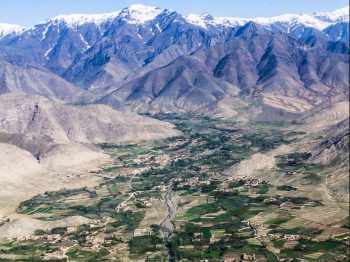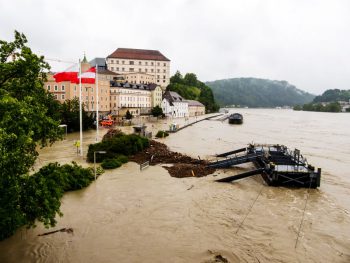Supporting sustainable agricultural strategies
The Agro Ecological Zoning (AEZ) methodology jointly developed by IIASA and the UN Food and Agriculture Organization (FAO) provides comprehensive information for rational land use planning and decision making at the global scale. Beyond Global Agro-Ecological Zoning (GAEZ), several National Agro Ecological Zoning (NAEZ) applications have also been developed.
IIASA and the FAO are collaborating under the project, Strengthening Afghanistan Institutions’ Capacity for the Assessment of Agriculture Production and Scenario Development, to support the implementation of tools for NAEZ and land resource information management in Afghanistan, which is a priority country for many IIASA National Member Organizations. The objective of this EU-funded project is to improve the monitoring and analysis of agricultural systems to support food security and sustainable agricultural policies.
In 2018, IIASA implemented the NAEZ Afghanistan tool to assess the quality and availability of land and water resources in the country’s 34 provinces to identify crop cultivation potentials under current and future agro-climatic conditions. The analysis underpins the design of spatially detailed strategies for the intensification of agriculture and adaptation to adverse climate change impacts. IIASA scientists also presented a one-week AEZ training workshop for specialists from the Ministry of Agriculture and other government institutions in the country, dealing with topics such as crop production, land use planning, water allocation, climate change impacts in agriculture, and rural development.

Figure 1: Suitability of rain-fed wheat in Turkey (Source: NAEZ Turkey). The map shows the suitability of current arable land for rain-fed wheat cultivation. It takes into account climatic, soil and terrain features of the land and applies CORINE Land Cover to locate the arable land.
The FAO has also been implementing a project on Agricultural Implications for Ecosystem Based Adaptation to Climate Change in Steppe Ecosystems in close cooperation with the Ministry of Food, Agriculture, and Livestock of the Republic of Turkey. The overall objective of this project is to increase the resilience of societies and steppe ecosystems to the impacts of climate change and to increase national capacity and awareness for medium and long-term ecosystem based adaptation plans. IIASA was tasked with establishing a NAEZ tool for Turkey as part of this project.
NAEZ Turkey includes current and historical information on climate, soil, terrain, and land cover to conduct an agro-ecological assessment of crop suitability and productivity, and has been used to analyze the impacts of climate change and other environmental drivers across the country. The tool and assessment provided by IIASA was completed in 2018 and presented at a final project workshop held in Konya, Turkey, in December 2018.
This research has uncovered important consequences for future agriculture of especially the Anatolian steppe region. Climate change will alter agro-ecological conditions due to an anticipated deterioration of soil moisture conditions and possibly severe temperature related negative impacts on especially wheat and barley, which are Turkey’s most important food staples. As a consequence, water management will be ever more important for sustaining agriculture in the country’s steppe regions.
Further information
- UN Food and Agriculture Organization (FAO), Italy
- Ministry of Agriculture, Afghanistan
- Ministry of Food, Agriculture and Livestock (MFAL), Turkey
Related research





